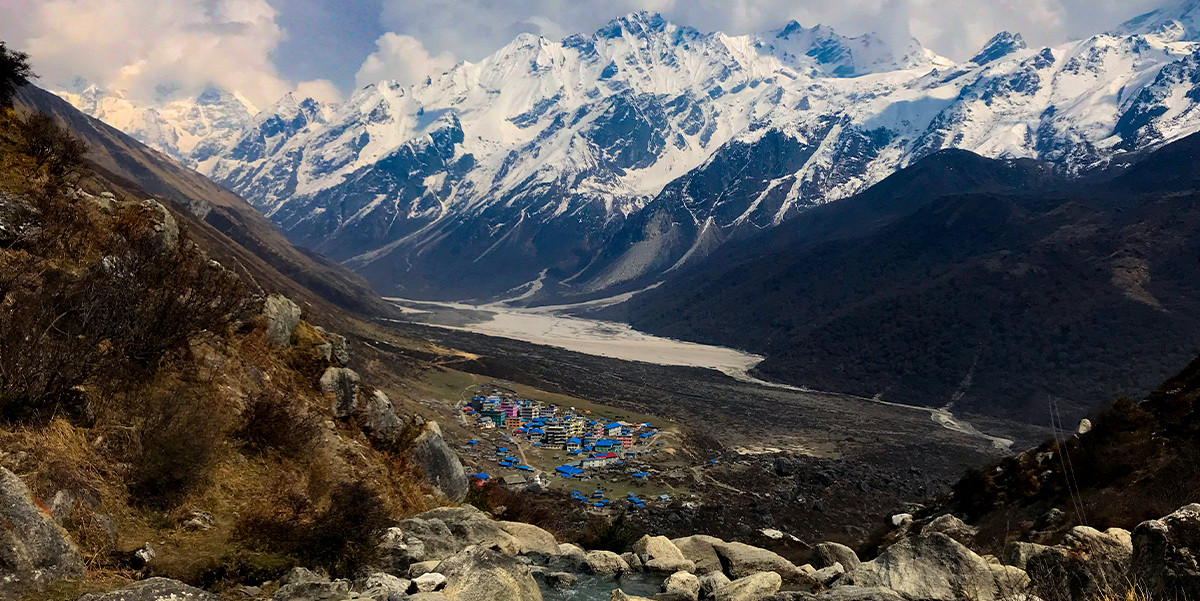Poon Hill Trek
The Poon Hill Trek is one of the most popular and accessible short treks in the Annapurna region of Nepal. Known for its stunning panoramic views of the Himalayas, this trek attracts many visitors who wish to experience the beauty of the mountains without the commitment required for longer, more strenuous treks. Here are the key details about the Poon Hill Trek:
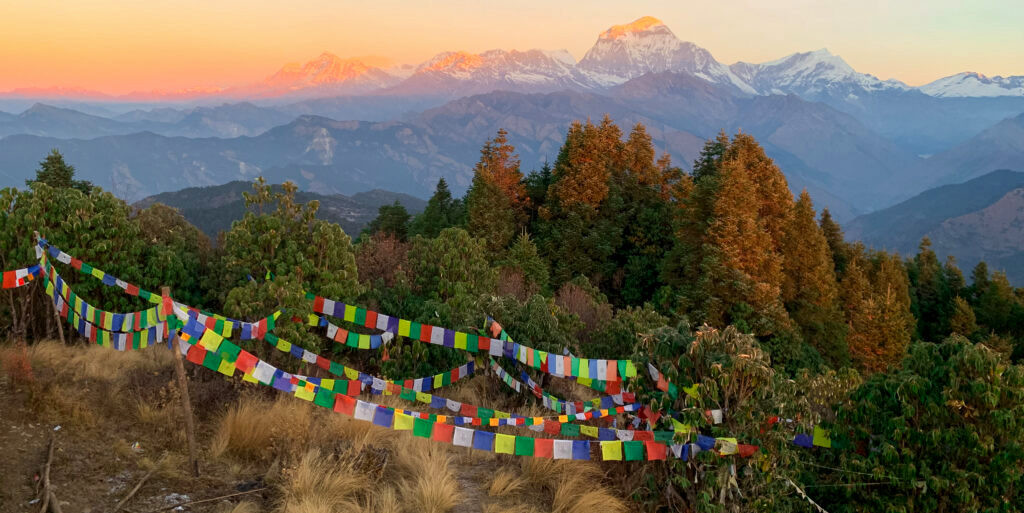
Duration and Distance
-
Duration: Typically 4-5 days
-
Distance: About 32-35 kilometers round trip
-
Starting/Ending Point: Nayapul, about an hour's drive from Pokhara
Route and Elevation
-
Highest Point: Poon Hill itself, at an elevation of 3,210 meters (10,532 feet)
-
Route: The trek usually follows a loop from Nayapul up to Ghorepani, climbs Poon Hill, and then descends via Tadapani to Ghandruk or returns the same way to Nayapul.
Highlights
-
Sunrise at Poon Hill: The main attraction of this trek is the sunrise from Poon Hill, where trekkers can enjoy spectacular views of mountains like Annapurna South, Annapurna I, Dhaulagiri, and Machapuchare (Fishtail Mountain).
-
Rhododendron Forests: The path winds through beautiful forests of rhododendron, especially vibrant during the spring when the flowers are in full bloom.
-
Ethnic Villages: The trail passes through several small villages inhabited by the Gurung and Magar communities, offering trekkers a glimpse into the rural lifestyle and culture of central Nepal.
Difficulty
- Level: Moderate; the trek is considered suitable for beginners and those with limited trekking experience, though it does include some steep ascents, particularly the early morning climb to Poon Hill.
Logistics
-
Accommodation: The trek is well-supported with numerous teahouses along the route, providing basic lodging and meals.
-
Permits: Trekkers need to obtain an Annapurna Conservation Area Permit (ACAP) and a Trekkers' Information Management System (TIMS) card.
The Poon Hill Trek is a fantastic option for those who want to experience the majesty of the Himalayas in a short period. It combines natural beauty, cultural experiences, and physical activity in a manageable package, making it an enduring favorite among both novice and experienced trekkers.
Langtang Valley Trekking
The Langtang Valley Trek is a captivating journey into one of Nepal's most beautiful regions, located relatively close to Kathmandu. This trek is renowned for its combination of breathtaking mountain landscapes and unique cultural experiences, particularly its insights into the lifestyle of the Tamang people, whose customs and traditions are heavily influenced by Tibetan culture. Here are some essential details about the Langtang Valley Trek:
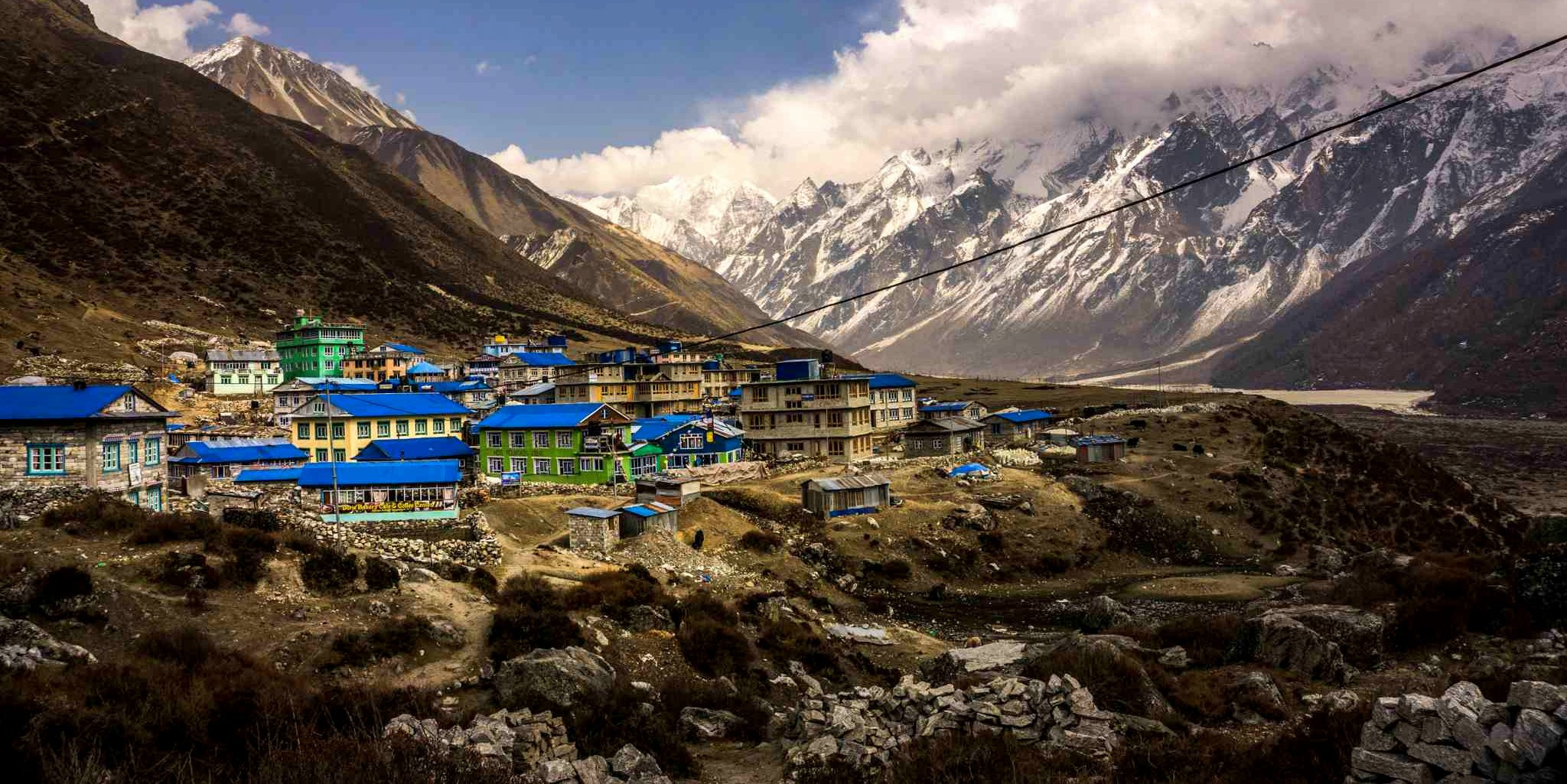
Duration and Distance
-
Duration: Typically 7-8 days
-
Distance: Approximately 65 kilometers (40 miles) round trip
-
Starting/Ending Point: Syabrubesi, about a 7-hour drive from Kathmandu
Route and Elevation
-
Highest Point: Kyanjin Gompa, at an elevation of around 3,870 meters (12,697 feet)
-
Route: The trek starts from Syabrubesi, climbs up through the Langtang Valley to Kyanjin Gompa, and then returns along the same route, allowing trekkers to deeply explore the valley.
Highlights
-
Scenic Views: Trekkers are treated to spectacular views of Langtang Lirung (7,234 meters), Langtang Ri, and other peaks. The region is less crowded compared to the Annapurna and Everest areas, offering a more peaceful trekking experience.
-
Kyanjin Gompa: A small Tibetan Buddhist monastery located in the village of Kyanjin, which is also a great place for day hikes, including a popular excursion to Tserko Ri for exceptional panoramic views.
-
Glacial Moraines and Rivers: The trek route follows along the Langtang River and passes through old glacial moraines and stunning landscapes.
Cultural Elements
-
Tamang Heritage: The region is predominantly inhabited by the Tamang people, who share cultural similarities with Tibetan Buddhism, offering a rich tapestry of cultural experiences.
-
Local Cheese: Kyanjin Gompa is famous for its local cheese factory, which trekkers often visit to taste yak cheese made in the traditional Tibetan style.
Difficulty
- Level: Moderate; the trek involves some long days of walking but doesn't generally reach the extreme altitudes that are characteristic of some other Himalayan treks, making it a good option for those concerned about altitude sickness.
Logistics
-
Accommodation: The trek offers several teahouses along the route, providing basic accommodations and meals.
-
Permits: Trekkers need to obtain a Langtang National Park permit and a TIMS (Trekkers' Information Management System) card.
The Langtang Valley Trek not only showcases the stunning beauty of the Himalayas but also offers a profound cultural experience, making it a memorable adventure for those seeking both natural beauty and a glimpse into the lives of Nepal’s highland communities. It’s an excellent alternative for trekkers who wish to experience something different from the more trafficked routes of Everest or Annapurna.
Mardi Himal Base Camp
The Mardi Himal Base Camp Trek is a relatively new and less traveled route in the Annapurna region of Nepal, offering an off-the-beaten-path experience with spectacular views of the Himalayas. This trek is ideal for those looking to escape the more crowded trails and enjoy a peaceful yet challenging hike through diverse landscapes. Here are the key details about the Mardi Himal Base Camp Trek:
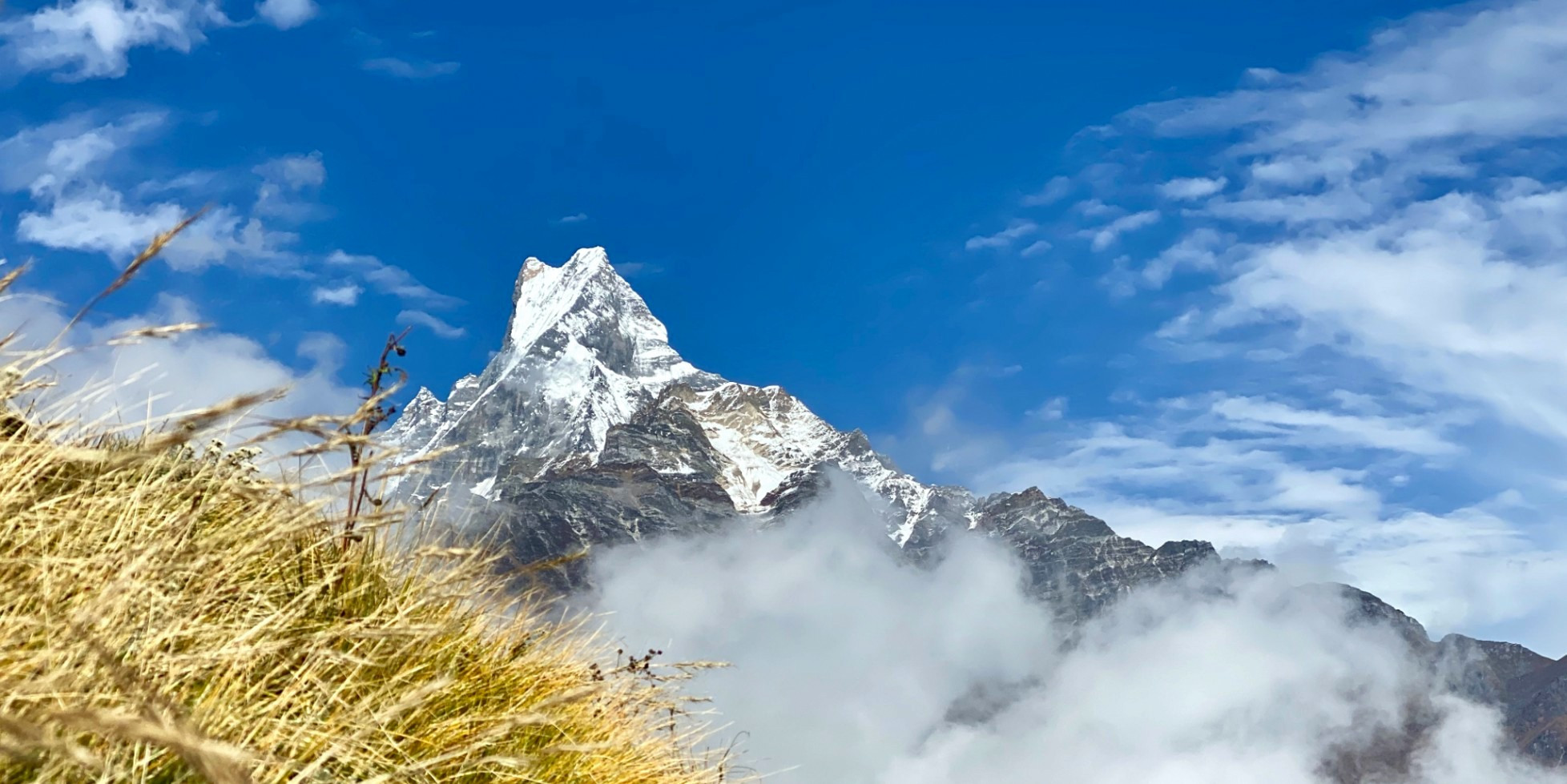
Duration and Distance
-
Duration: Typically 5-7 days
-
Distance: Around 40-55 kilometers (25-34 miles) round trip
-
Starting/Ending Point: Phedi or Kande, short drives from Pokhara
Route and Elevation
-
Highest Point: Mardi Himal Base Camp, at an elevation of 4,500 meters (14,763 feet)
-
Route: The trek begins either at Phedi or Kande, ascending through lush rhododendron forests to High Camp and eventually to Mardi Himal Base Camp. The return can follow the same route or a circular path through Siding village.
Highlights
-
Stunning Views: Offers close-up views of Mardi Himal, Machapuchare (Fishtail Mountain), Annapurna South, and Hiunchuli.
-
Diverse Landscapes: The trek passes through thick forests, alpine meadows, and rocky mountain terrain, providing a varied trekking experience.
-
Seclusion and Serenity: As a less frequented route, the Mardi Himal Base Camp Trek allows for a serene trekking experience, away from the crowds of more popular trails.
Difficulty
- Level: Moderate to Challenging; although it doesn't reach the extreme altitudes of some other treks, the steep and rugged paths can be quite demanding, especially as it approaches Base Camp.
Logistics
-
Accommodation: The trail has some newly built teahouses and lodges, providing basic accommodation and meals.
-
Permits: Trekkers need to obtain an Annapurna Conservation Area Permit (ACAP) and a Trekkers' Information Management System (TIMS) card.
The Mardi Himal Base Camp Trek is a fantastic choice for trekkers looking to experience the beauty of the Annapurna range in a tranquil setting. It is particularly appealing for those seeking solitude and the chance to connect deeply with nature without venturing into the logistical complexities and high altitudes of Nepal's longer treks.
Ghandruk Trek
The Ghandruk Trek, often celebrated for its scenic beauty and cultural richness, is one of the most popular short treks in the Annapurna region of Nepal. This trek provides a wonderful glimpse into the rural life of the Gurung community and offers stunning views of the Himalayan giants such as Annapurna South, Machapuchare (Fishtail Mountain), and Hiunchuli. Here’s what makes the Ghandruk Trek a memorable adventure:
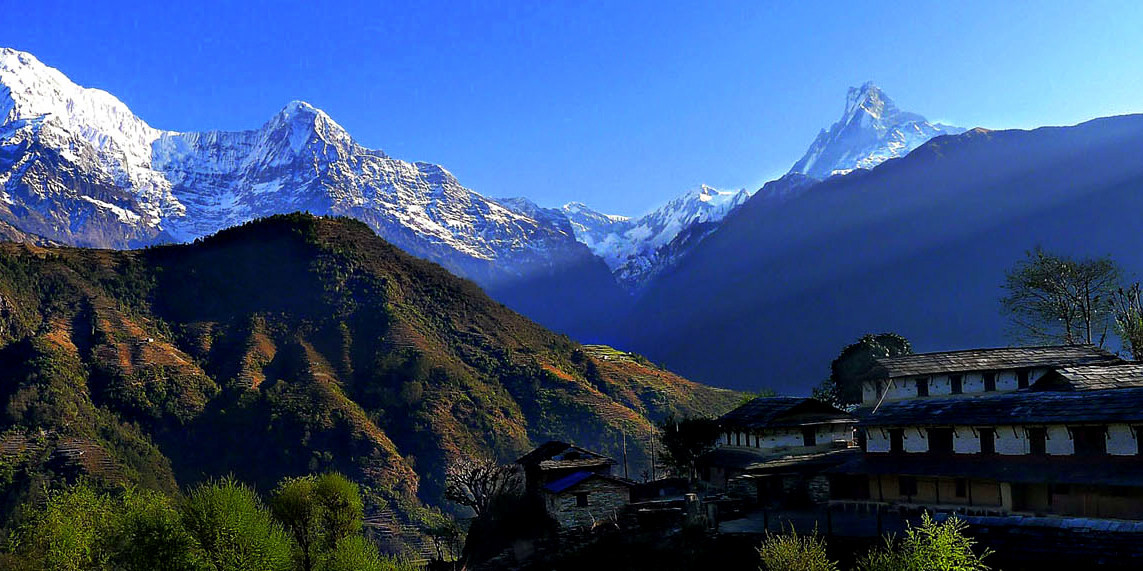
Duration and Distance
-
Duration: Typically 3-5 days
-
Distance: Variable, depending on the chosen route but generally around 20-30 kilometers round trip
-
Starting/Ending Point: Nayapul, about an hour's drive from Pokhara
Route and Elevation
-
Highest Point: Ghandruk village, at an elevation of approximately 2,012 meters (6,601 feet)
-
Route: The trek typically starts from Nayapul, hiking through Birethanti and climbing up to Ghandruk. It can either return the same way or continue in a loop through Landruk or Kimche.
Highlights
-
Gurung Culture: Ghandruk is a large Gurung village that offers an in-depth look at the culture of this indigenous community, including traditional houses and museums dedicated to showcasing local customs.
-
Panoramic Mountain Views: The village provides exceptional views of Annapurna South, Gangapurna, Annapurna III, and Machapuchare.
-
Accessibility and Comfort: Due to its relative ease and the availability of comfortable teahouses, this trek is a great option for families or those who do not wish to undertake more strenuous high-altitude walks.
Difficulty
- Level: Easy to moderate; the trek is suitable for beginners and those with limited trekking experience. It involves some steep sections but is generally considered less demanding.
Logistics
-
Accommodation: Well-developed teahouses and lodges in Ghandruk offer good facilities, including options for hot showers and comfortable beds.
-
Permits: Trekkers need to obtain an Annapurna Conservation Area Permit (ACAP) and a Trekkers' Information Management System (TIMS) card.
The Ghandruk Trek is a perfect blend of natural beauty and cultural exploration, making it an excellent choice for those looking to experience the Himalayas without venturing into more remote or challenging terrains. It’s an ideal trek for a quick yet enriching Himalayan experience.
Helambu Cultural Trek
The Helambu Cultural Trek is a delightful journey close to Kathmandu, known for its scenic beauty, cultural richness, and relative ease compared to other high-altitude treks in Nepal. It offers a unique opportunity to explore the culture of the Hyolmo people, amidst a backdrop of verdant forests and impressive mountain vistas. Here's what makes the Helambu Cultural Trek a notable adventure:
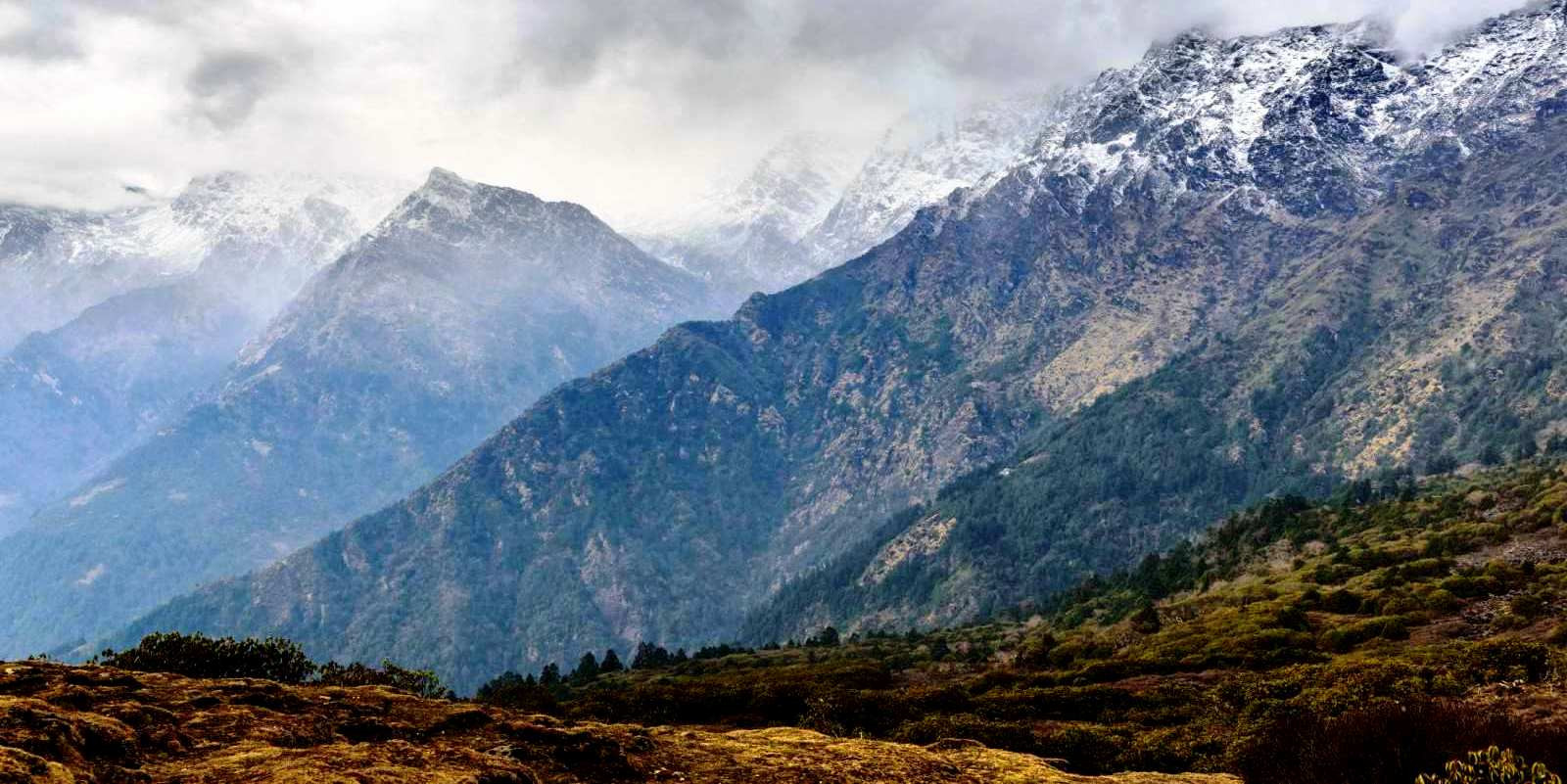
Duration and Distance
-
Duration: Typically 5-7 days
-
Distance: Approximately 50 kilometers (31 miles) round trip
-
Starting/Ending Point: Sundarijal, which is about an hour’s drive from Kathmandu
Route and Elevation
-
Highest Point: Tharepati Pass, at an elevation of 3,650 meters (11,975 feet)
-
Route: The trek begins at Sundarijal and moves through Chisopani, Kutumsang, Thadepati, and Sermathang before concluding at Melamchi Pul Bazar.
Highlights
-
Cultural Insight: The trek traverses regions populated by the Hyolmo people, offering trekkers an in-depth look at their Buddhist culture.
-
Scenic Beauty: The path winds through lush rhododendron forests and bamboo groves and offers views of the Langtang Himalayas.
-
Accessibility: Its proximity to Kathmandu makes it a convenient option for those with limited time who still want to experience the Himalayas.
Difficulty
- Level: Easy to moderate; this trek does not reach the high altitudes of other Himalayan treks and is considered suitable for beginners and those looking for a less physically demanding route.
Logistics
-
Accommodation: The trail is well-served by a range of teahouses offering basic to comfortable accommodations.
-
Permits: Trekkers need to obtain a TIMS (Trekkers' Information Management System) card and a Langtang National Park permit.
The Helambu Cultural Trek is less about high-altitude endurance and more about cultural engagement and enjoying the natural landscapes. It is perfect for those who are looking to immerse themselves in local traditions and enjoy leisurely walks within the majestic settings of the Himalayas, all while avoiding the logistical complexities and physical challenges of Nepal’s more strenuous treks.
Tips for Top 5 One Week Treks in Nepal
When planning to undertake any of the top five one-week treks in Nepal, it's important to go prepared. Here are combined tips that will ensure a safer, more enjoyable, and culturally enriching experience across all treks:
Preparation and Packing
-
Pack Light and Right: For shorter treks like Poon Hill and Ghandruk, minimize your load but ensure you have essential gear and clothing. For higher-altitude treks like Mardi Himal, layering your clothes for varying temperatures is crucial.
-
Stay Hydrated and Nourished: Carry enough water and snacks like energy bars or dried fruits to maintain energy levels throughout the trek.
Timing and Weather
-
Start Early: For treks with famous sunrise views, such as Poon Hill, starting early is essential to catch the breathtaking sights.
-
Check Weather Forecasts: Weather can change rapidly, especially in higher altitudes like on the Mardi Himal or Langtang Valley treks, so check the forecast and plan accordingly.
Health and Safety
-
Acclimatize Appropriately: Particularly for treks that go above 3,000 meters, such as Langtang Valley and Mardi Himal, take time to acclimatize to prevent altitude sickness.
-
Travel Insurance: Ensure you have insurance that covers high-altitude trekking.
-
Safety First: Prioritize your health and safety. If you feel unwell, it's better to descend or rest than to push through.
Cultural Engagement
-
Respect Local Customs: Engage respectfully with local communities, particularly in culturally rich areas like Helambu and Ghandruk, where traditions are strong and cherished.
-
Hire Local Guides: Utilizing local guides not only enriches your experience with their knowledge but also supports the local economy.
Environmental Responsibility
-
Leave No Trace: Carry out all your trash and choose eco-friendly lodging options when available.
-
Protect Against the Sun: High altitudes mean stronger UV rays. Use sunscreen, wear a hat, and put on sunglasses to protect yourself.
Gear and Equipment
-
Comfortable Footwear: Durable and comfortable hiking boots are a must, regardless of the trek's difficulty.
-
Essentials Kit: Include a first aid kit, a map, a compass (or GPS), extra layers, and rain gear.
By following these combined tips, you can make your trekking experience in Nepal safer, more comfortable, and more rewarding. Whether you're trekking through the rhododendron forests of Poon Hill or exploring the Tibetan-influenced cultures of Langtang Valley, preparation is key to a successful adventure.
Ideal for Top 5 One Week Treks in Nepal
Trekking in Nepal can be a year-round activity, depending on the region and altitude. Here’s a detailed look at what you can expect during each season for the top five one-week treks in Nepal and how each season impacts the trekking experience:
Spring (March to May)
-
Ideal for All Treks: This is one of the best times to trek in Nepal. The weather is warm, and the skies are generally clear, especially in April and May.
-
Flora: Spring is notable for rhododendron blooms, particularly vibrant on treks like the Poon Hill Trek.
-
Visibility: Excellent mountain views across all routes.
Summer/Monsoon (June to August)
-
Challenging Conditions: This season is marked by heavy rains, which can cause landslides and make trails slippery and muddy.
-
Not Ideal: Most treks, including Langtang Valley, Mardi Himal, and Poon Hill, might be less enjoyable due to obscured views and difficult trekking conditions.
-
Exceptions: Regions like Mustang and Dolpo, which lie in the rain shadow of the Himalayas, are better options during this season.
Autumn (September to November)
-
Peak Trekking Season: Autumn is the most popular trekking season in Nepal due to stable weather and clear skies.
-
Ideal for All Treks: Perfect conditions for the Poon Hill, Langtang Valley, Mardi Himal, Ghandruk, and Helambu treks.
-
Festivals: This season also coincides with major Nepali festivals like Dashain and Tihar, offering cultural insights.
Winter (December to February)
-
Cold Weather: Winter brings colder temperatures, especially at higher altitudes, and snowfall, which might make higher routes like Mardi Himal Base Camp more challenging.
-
Suitable Treks: Lower-altitude treks, such as the Ghandruk Trek, are more manageable and less crowded during winter.
-
Clear Skies: Despite the cold, the skies are often very clear, offering beautiful mountain views.
Seasonal Summary
-
Spring and Autumn offer the most favorable conditions for trekking in terms of weather, visibility, and trail conditions. These seasons are highly recommended for any of the top treks in Nepal.
-
Winter can be a good option for lower-altitude treks, but it requires good preparation for cold weather.
-
Summer/Monsoon is generally less ideal due to rain and visibility issues but can be considered for treks in rain-shadow areas.
Each season has its charm and challenges, and choosing the right time to trek can greatly enhance your experience. Whether you seek lush landscapes in spring or crisp mountain views in autumn, Nepal’s trekking routes offer something unique throughout the year.
Catering to a broad spectrum of trekkers, the top five one-week treks in Nepal - Poon Hill, Langtang Valley, Mardi Himal Base Camp, Ghandruk, and Helambu Cultural Trek - provide a mix of stunning scenery, cultural exposure, and difficuties. From the amazing sunrises at Poon Hill to the vibrant cultural encounters at Helambu, every trek offers a different perspective on the natural beauty and customs of Nepal. Though winter and monsoon seasons have their beauty with fewer people and unique scenery, the perfect hiking times are during spring and fall for ideal weather and unobstructed sight. These trips not only physically test hikers but give deep ties to the cultural and natural heritage of Nepal, therefore, they are unforgettable experiences.
FAQs for Top 5 One Week Treks in Nepal
Q: What is the best time to go on a one-week trek in Nepal?
A: The optimal trekking seasons in Nepal are spring (March to May) and autumn (October to November). These periods offer stable weather and clear skies, providing the best conditions for mountain views.
Q: Do I need a guide for one-week treks in Nepal?
A: While it's possible to trek independently, hiring a guide is advisable, particularly for those new to the region or trekking. Guides enhance safety, provide valuable insights, and can assist in emergencies, supporting the local economy.
Q: What kind of accommodation can I expect on these treks?
A: Accommodations typically consist of tea houses or guesthouses offering basic comforts, including shared rooms and communal bathrooms. Some popular trekking areas might have options for more upscale lodging.
Q: How fit do I need to be to complete a one-week trek in Nepal?
A: These treks are generally moderate in difficulty. Adequate physical fitness will make the trekking experience more enjoyable. Engaging in regular walking or hiking as preparation is recommended.
Q: Are permits required for these treks?
A: Yes, treks in Nepal typically require permits, such as the Annapurna Conservation Area Permit (ACAP) and a TIMS card for treks in the Annapurna region, and a Langtang National Park Permit and TIMS card for the Langtang and Helambu treks.
Q: How much does it typically cost to go on one of these treks?
A: Daily costs can range from $20 to $40, covering accommodations, meals, and permits. Additional expenses include guide/porter hire and transport to the trek's start point.
Q: What are the risks involved in these treks?
A: Risks include altitude sickness, physical injuries, and adverse weather conditions. Proper preparation, appropriate gear, staying informed about weather changes, and having trekking insurance can mitigate these risks.
Q: Can I trek during the monsoon season?
A: Trekking during the monsoon season (June to September) is less than ideal due to rain and limited visibility. However, rain-shadow areas like Upper Mustang and Dolpo remain viable options for trekking during this time.
For the Nepal tour, please click here.
If you are looking for different kinds of Nepal Tours or Trekking Packages, feel free to contact us.
